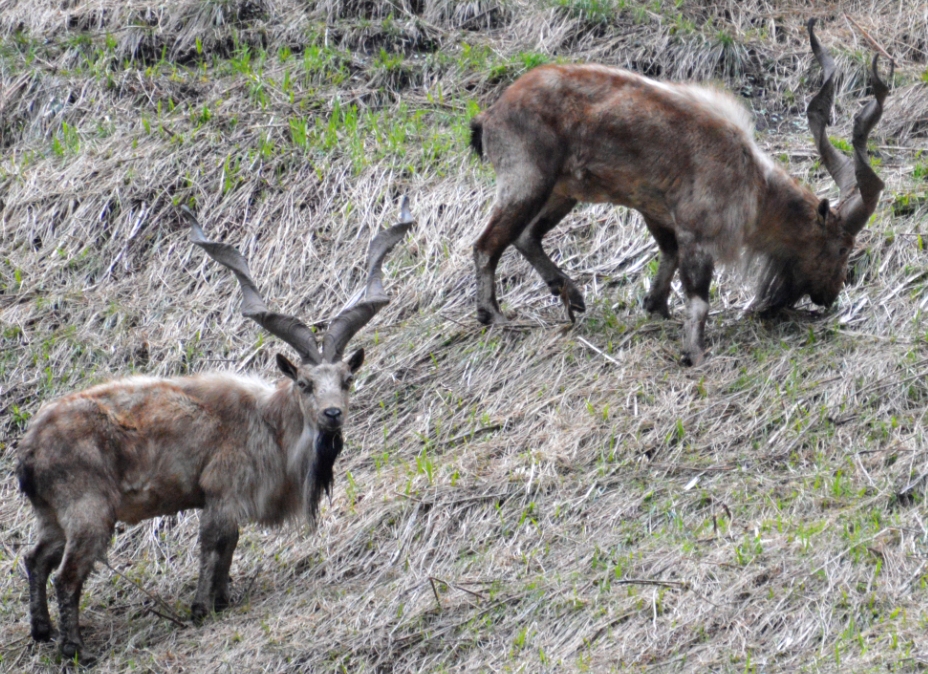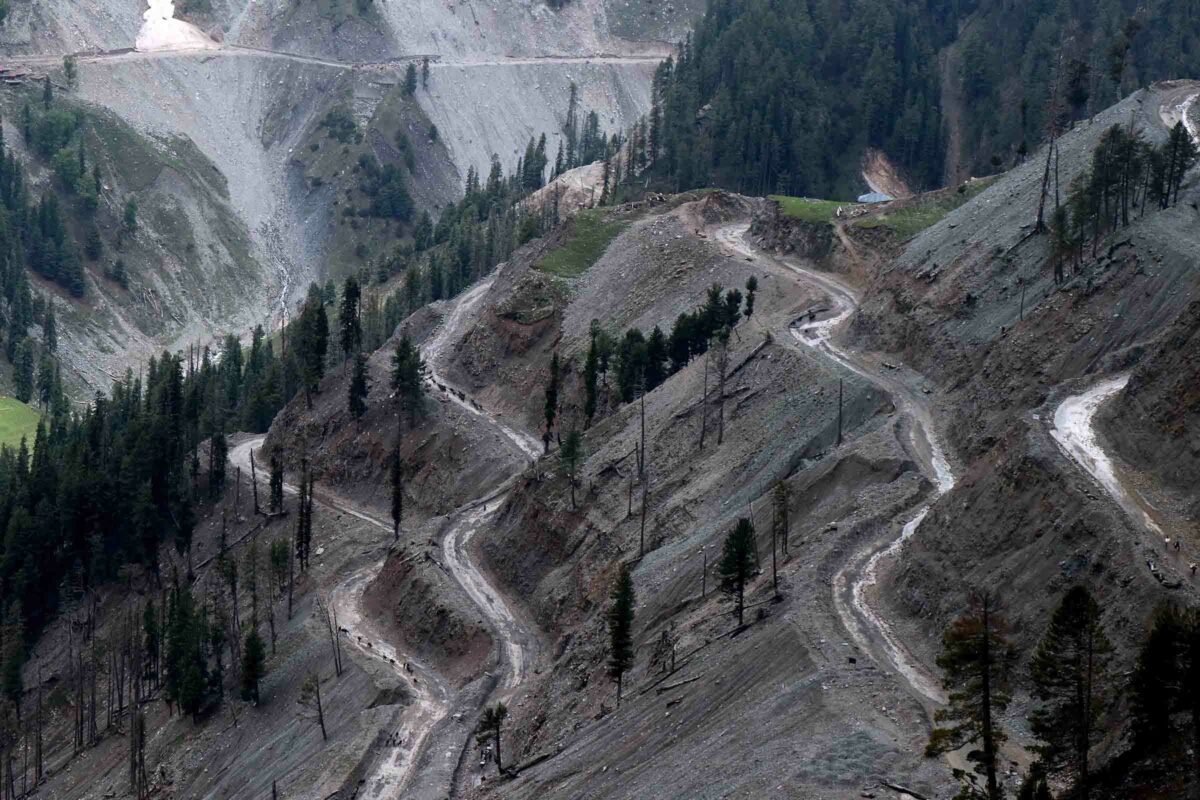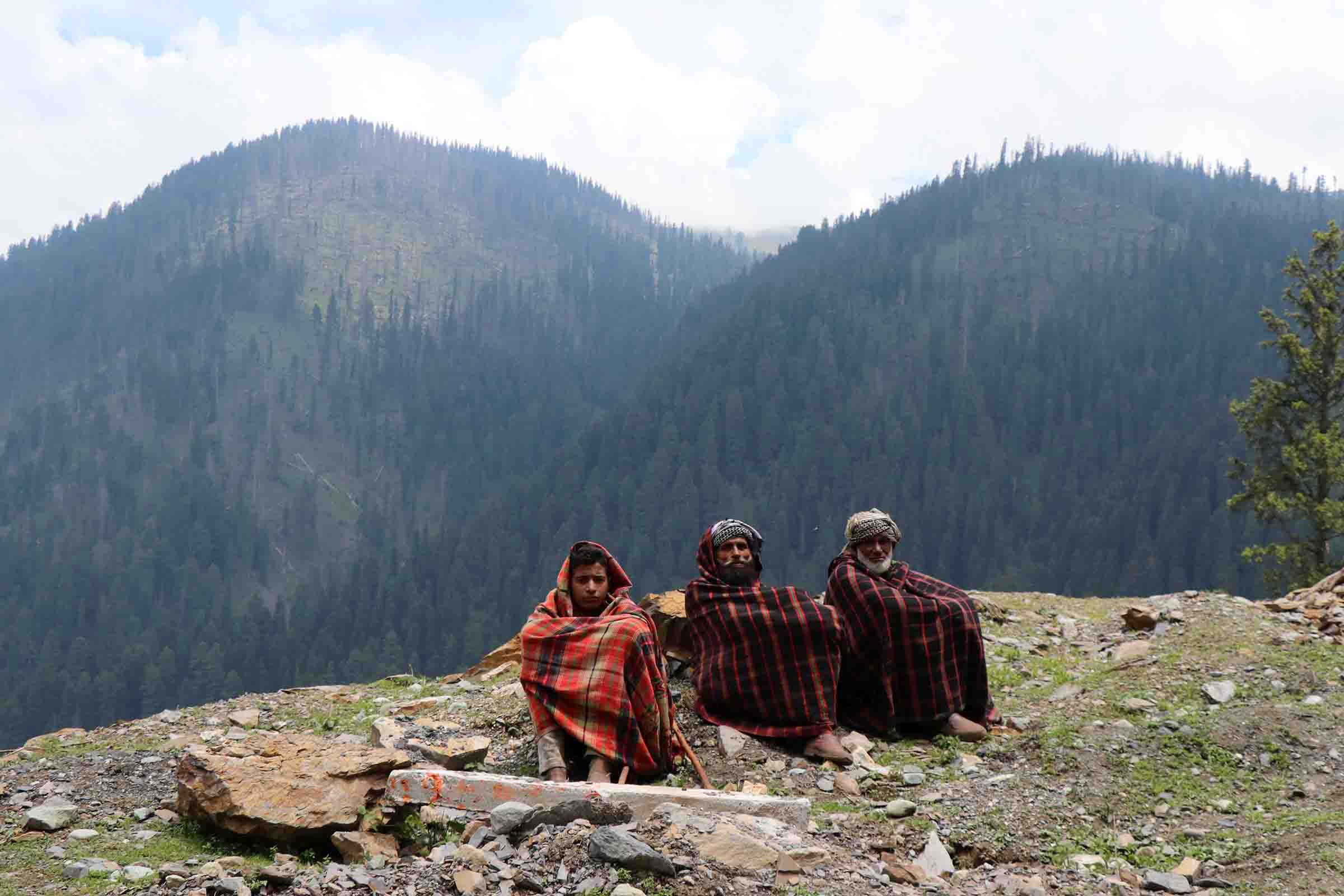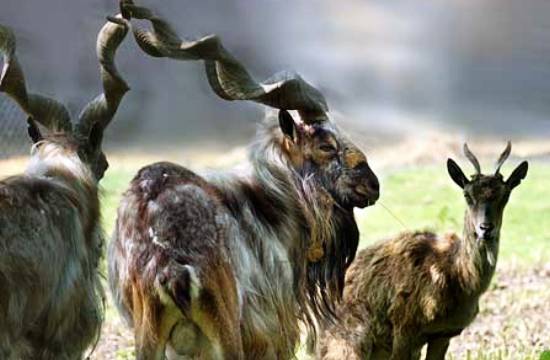Like Hangul, Kashmir is the home to Markhor, a near-threatened species. Officially they exist in the protected areas at Hirpora (Shopian) and Kazinag. The recent census suggested the goat numbers have gone down hugely in Shopian unlike Uri, reports Insha Shirazi

For two decades now, the Wildlife Trust of India (WTI) in collaboration with the Department of Wildlife Protection (DWP) in Jammu and Kashmir is working to conserve the Pir Panchal Markhor. Astral Foundation is supporting the initiative. Kashmir is the only home to the critically endangered Hangul (Cervus Hanglu) and the near-threatened Markhor (Capra Falconeri).
Of the region’s five National Parks (NPs) and 15 Wildlife Sanctuaries (WLSs), the Hirpora Wildlife Sanctuary in Shopian is special. Alongside the Kazinag National Park in Uri, it hosts a viable population of Kashmir Markhor.
Spread over 341 sq km, the Hirpora WLS, around 80 km south of Srinagar, was established in 1987. Its location is fascinating. Surrounded by Gumsar Lake in its north, Hirpora hamlet in the north-east, Rupri to the east, Saransar to the south, and the Pir Panjal pass to the west, it encompasses various habitat types, including mixed coniferous forests, sub-alpine scrub forests, subalpine meadows, and alpine habitats.
Besides Markhor, the largest wild goat in the world, the Sanctuary hosts Himalayan black bear, Himalayan brown bear, and Kashmir musk deer. It has nearly 130 documented bird species, including the Himalayan Woodpecker, Spotted Forktail, Western Tragopan, Rock Bunting, Rufous-Breasted Accentor, Blue Rock Thrush, White-Capped Redstart, Himalayan Griffon, Common Stonechat, and Grey Wagtail.
United for Conservation
“Conservation is the art of finding common ground amidst divergent agendas and interests,” explained Sameer Khazir, Assistant Manager of Mountain Ungulate Projects at the WTI in Jammu and Kashmir. “Involving local communities is vital for conservation. Educating them about the value of protecting species and actively involving them in the process is crucial.”
Compared to Kazinag, however, Hirpora supports a smaller population of Markhor. During the summer, migratory herders from the Rajouri and Poonch visit the sanctuary. “We build trust, provide education, and offer means of subsistence to these herders,” Khazir stated. “Our assessments show a reduction in their reliance on forest fuelwood after connecting them with government schemes and providing around 300 LPG cylinders.”
In Red List
The Pir Panjal Markhor is listed as Near Threatened in the IUCN Red List of threatened species and falls under Schedule-I of the Wildlife (Protection) Act of 1972. “We have linked migratory herders with the NRLM Government scheme and formed Self Help Groups (SHGs). Additionally, we are initiating ecotourism activities in Kazinag and Hirpora,” Khazir shared.
They have constituted “Markhor Watcher” groups comprising enthusiastic and passionate youths from local communities, who receive training and are equipped with techniques and gear to collect information during patrolling. Their role is vital in preventing and detecting poaching. Anti-grazing camps have also been established. Critical Markhor Habitats (CMHs) have been identified through field surveys, which must remain free from livestock grazing.
However, Khazir clarified that the conservation efforts do not aim to eliminate livestock grazing but address the growing pressure caused by non-traditional herding practices, where designated pastures are sublet for materialistic gains.
These collaborative initiatives are some of the highlights aimed at protecting the Markhor and its habitats, promoting sustainable practices and engaging local communities in the conservation process.
The Mughal Road
The Mughal Road, which connects Shopian and Bufliaz splits the Sanctuary into two sections. This historic route poses a significant threat to the wildlife in the area.

Zoologist Dr Hameem Mushtaq, who teaches at the Central University of Kashmir, highlighted the issue of nomadic herders as a frequent threat to vulnerable species. He emphasised the need for better infrastructure, such as speed bumps, along the Mughal Road. Besides, the power transmission lines passing through the Sanctuary pose a severe threat.
To address these concerns, careful planning and management are crucial. Visitors should adopt eco-friendly practices and consider the impact of their visit, Hameem suggested.
Poaching is a major threat to the Markhor and species in Kazinag and its surrounding areas. Khazir mentioned Lachipora Wildlife Sanctuary and Naganari Conservation Reserve as key locations where poachers have been reported with firearms and other equipment. The migration of these species to lower elevations during autumn and winter exposes them to increased risks.
In coordination with the Markhor Watcher groups, efforts have been made to confiscate licensed firearms owned by local communities in and around Kazinag during the winter season.
Livestock grazing is more prevalent in the Hirpora compared to Kazinag. Khazir explained that there are 300 Doks (a type of livestock) in three herder settlements in the Hirpora. However, it is important to note that these herders’ long-standing presence does not imply ownership of the protected areas.
Protecting Paradise
“Mountain Ungulates, as primary consumers, are directly affected by climate change-induced changes in plant phenology,” explained Dr Tanushree Srivastava, Manager and Head of the Western Himalaya Mountain Ungulate Project at the WTI in Jammu and Kashmir. These species synchronize their reproduction with the availability of food resources, making disruptions in plant phenology due to climate change detrimental to their reproduction and population growth.
The mismatch between the peak availability of food resources and the requirements of these seasonally breeding ungulate species has already been reported globally and is expected to occur in these mountain ungulate species as well. The Himalayas being the youngest mountain chain in the world, are particularly vulnerable to climate change.
Intesar Suhail, the Wildlife Warden at Shopian highlighted that while the melting of glaciers in high altitudes is normal, the Hirpora catchment has not yet experienced significant impacts of climate change.
Addressing the impact of climate change on mountain ungulates and their habitat is crucial for their survival. The vulnerability of the Himalayas to climate change underscores the need for proactive conservation measures and sustainable practices to mitigate the potential risks and protect these unique species and ecosystems.
Counting Markhors
“We collaborated with the Department of Wildlife Protection (DWP), Jammu and Kashmir, to conduct a Markhor census in 2022-23,” Dr Srivastava said. “The census results revealed a significant decline in Markhor sightings in Hirpora compared to Kazinag.”

In the 2004 survey, the Markhor population in the Sanctuary ranged from 45 to 55 individuals. However, in the recent census, only three Markhor individuals were located. This decline can be attributed to various factors, including heavy livestock grazing, traffic on the Mughal Road, the presence of transmission lines, and ongoing developmental activities. To address these concerns, they undertook livestock surveys in Hirpora this year. The DWP is planning legal action against non-traditional herders and those exceeding the permitted livestock limits.
Guardians The Goat
“Hirpora and Kazinag are the two crucial protected areas known for historically supporting viable populations of Markhor in the Indian subcontinent,” emphasized Dr Srivastava. “For nearly two decades, the Markhor project has been a top priority ‘Species Recovery’ initiative at WTI, working closely with the Department of Wildlife Protection (DWP), Jammu and Kashmir. The recent census indicated that Kazinag still maintains a healthy population of Markhor, unlike Hirpora.”
Department of Wildlife Protection is planning to strictly enforce the permissions in the protected areas so that the animal species do not get disturbed.
“The WTI’s Kashmir Markhor Recovery Project is playing a vital role in reviving the Pir Panjal Markhor, a species long believed to be extinct in the UT of Jammu and Kashmir,” Khazir shared. “Our team is dedicated to the conservation of critical Markhor habitats, assessing the impact of human activities and livestock grazing on the Markhor and its habitat. The extension of the Hirpora Sanctuary and the establishment of the Tattakuti Sanctuary were achieved through coordinated efforts. However, additional interventions are now required to mitigate the effects of overgrazing and wildlife crime.”
“We have developed a comprehensive Management Plan for a ten-year period, which guides our actions and implementation,” Suhail explained. “Key issues we address include habitat conservation, soil conservation, afforestation, and anti-grazing measures. Our activities range from round-the-clock patrols to combat poaching and illegal hunting, establishing grazing season camps, combating timber smuggling, constructing watchtowers for infrastructure, and conducting regular wildlife population monitoring.”

“With support from the Department of Wildlife Protection, J&K, and generous donors like the Astral Foundation, the Wildlife Trust of India has made significant strides in the conservation of Markhor in J&K,” Srivastava added. “This year, we plan to expand the reach of the Markhor Recovery Project through extensive and impactful interventions, raising awareness through outreach programs and encouraging people to become more conscious and responsible stewards of Markhor and wildlife conservation in J&K as a whole.”
By raising awareness, involving local communities, and implementing sustainable tourism practices, it can be ensured that the protection and preservation of these remarkable areas and the species that call them home. The collaborative efforts of conservation organizations, government departments, and the active participation of visitors will play a crucial role in securing a brighter future for the Markhor and the fragile ecosystems they inhabit.














